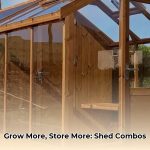Haciendas, with their sun-baked walls and timeless elegance, evoke a sense of history and romance. Central to their enduring appeal is adobe, the earthen brick that forms the core of these iconic structures. More than just a building material, adobe embodies a sustainable building practice passed down through generations, a testament to the ingenuity of blending earth and human craftsmanship. This guide delves into the world of adobe, exploring its unique properties, the process of its creation, and its enduring legacy in a world increasingly focused on sustainable construction.
Unveiling the Secrets of Adobe Brick
Adobe, a simple mixture of earth, water, and often straw, is a remarkably durable building material. This humble combination, molded and dried under the sun, transforms into the strong, resilient bricks that have characterized hacienda architecture for centuries. The very longevity of these structures speaks volumes about adobe’s inherent strength and its suitability for the demanding climates where haciendas are often found.
What is Adobe? Earth’s Building Block
Adobe is essentially earth, molded and sun-dried into a building block. The primary ingredient is clay-rich soil, combined with water and often straw or other natural fibers for added strength and flexibility. This mixture, packed into wooden molds and left to bake under the sun, transforms into a surprisingly durable and versatile material.
The Adobe Advantage: Natural Climate Control
Adobe possesses a remarkable ability to regulate temperature, a crucial factor in the often harsh climates where haciendas are typically built. This “thermal mass” – the capacity to absorb and release heat – makes adobe an ideal building material for regions with significant temperature fluctuations. During the day, adobe walls absorb the sun’s energy, keeping the interior cool. As night falls and temperatures drop, the stored heat is released, maintaining a comfortable indoor temperature.
Crafting Adobe Bricks: A Step-by-Step Guide
Making adobe bricks is a relatively simple process, yet it requires a deep understanding of the materials and the environment. Here’s a step-by-step look at how these earthen wonders are created:
-
Gathering the Earth: Sourcing the right type of clay-rich soil is essential. The clay content determines the brick’s final strength and durability. Sand is also often added to the mix.
-
Mixing the Ingredients: The soil, water, and straw (or other fibers) are thoroughly mixed to create a homogenous, mud-like consistency.
-
Molding the Bricks: The mixture is then pressed into wooden molds of varying sizes, shaping the adobe bricks.
-
Sun Drying: The molded bricks are laid out in the sun to dry. This process can take several days or weeks, depending on the climate and the size of the bricks.
-
Curing (Optional): In some traditions, after the initial sun drying, the bricks are stacked in a way that allows air to circulate further, curing them and increasing their strength.
The Properties of Adobe: A Deeper Dive
Understanding the properties of adobe provides insights into its performance as a building material.
Thermal Mass: Nature’s Thermostat
Adobe’s thermal mass is its defining characteristic. The material absorbs heat slowly during the day and releases it slowly at night, moderating temperature swings and reducing the need for artificial heating and cooling.
Thermal Conductivity: A Gentle Barrier
Adobe has relatively low thermal conductivity, meaning it slows the transfer of heat. This further enhances its insulating properties.
Moisture Content: A Critical Factor
Moisture can significantly impact adobe’s performance. High moisture content reduces its insulation value and can lead to structural issues. Protecting adobe from excessive moisture is crucial for its longevity.
The Adobe Mix: Balancing Act
The precise mix of soil, sand, and fiber influences the final properties of the adobe brick. Different mixes are used in different climates and for different purposes. Ongoing research continues to explore how variations in the mix can optimize adobe’s performance.
| Property | Impact |
|---|---|
| Thermal Mass | Absorbs and releases heat, moderating temperature fluctuations. |
| Thermal Conductivity | Resists heat flow, enhancing insulation. |
| Moisture Content | High moisture levels reduce insulation and can cause damage. |
| Adobe Mix | Variations in soil, sand, and fiber content impact thermal properties and overall performance. |
Durability and Maintenance of Adobe: Ensuring Longevity
While durable, adobe requires proper care and maintenance to ensure its longevity.
Factors Affecting Durability
Several factors can affect the lifespan of adobe structures:
- Climate: Harsh freeze-thaw cycles can damage adobe. Dry, consistent climates are generally more favorable.
- Maintenance: Regular maintenance, including applying protective coatings and managing moisture, is essential.
- Construction Quality: Proper construction techniques, including the quality of the mortar and the foundation, are critical.
Protecting Against Moisture
Moisture is adobe’s primary enemy. Strategies for protecting adobe include:
- Deep eaves: Overhanging eaves protect walls from rain.
- Proper drainage: Ensuring water flows away from the structure is crucial.
- Protective coatings: Applying stucco or other breathable sealants helps to repel water.
Adobe and Sustainability: A Building Material for the Future
Adobe’s inherent sustainability makes it a compelling building material in an era of increasing environmental awareness.
Environmental Benefits
- Low embodied energy: Producing adobe bricks requires significantly less energy than firing traditional bricks.
- Locally sourced materials: Using local soil minimizes transportation impacts.
- Biodegradable: Adobe decomposes naturally at the end of its life cycle.
- Recyclable: Some adobe bricks can be reused in new construction.
Challenges and Opportunities
While adobe offers numerous advantages, challenges remain:
- Moisture susceptibility: Requires careful design and maintenance to mitigate moisture damage.
- Regional variations in soil: Not all soils are suitable for adobe construction.
- Building codes: Modern building codes sometimes present hurdles for adobe construction.
Ongoing research and development are addressing these challenges, exploring new mixes, stabilizers, and construction techniques to improve adobe’s performance and expand its applicability.
Conclusion: The Enduring Legacy of Adobe
Adobe is more than just a building material; it represents a connection to the earth and a sustainable building tradition that has endured for centuries. While modern construction methods have largely replaced traditional adobe building, there is a resurgent interest in this ancient technique, driven by a growing awareness of the environmental benefits of building with earth. Adobe reminds us that sometimes the oldest solutions are the most sustainable, offering a path towards a future where building harmonizes with nature.
- Greenhouse Storage Shed Combos: Your Guide to Combining Growing and Storage - April 21, 2025
- Greenhouse Shed Combo: Design, Build & Grow Year-Round - April 21, 2025
- Gingham vs. Plaid: What’s the Difference? A Complete Guide - April 21, 2025










